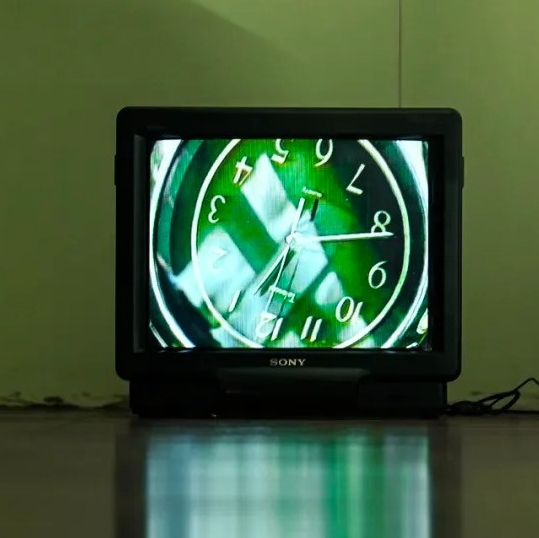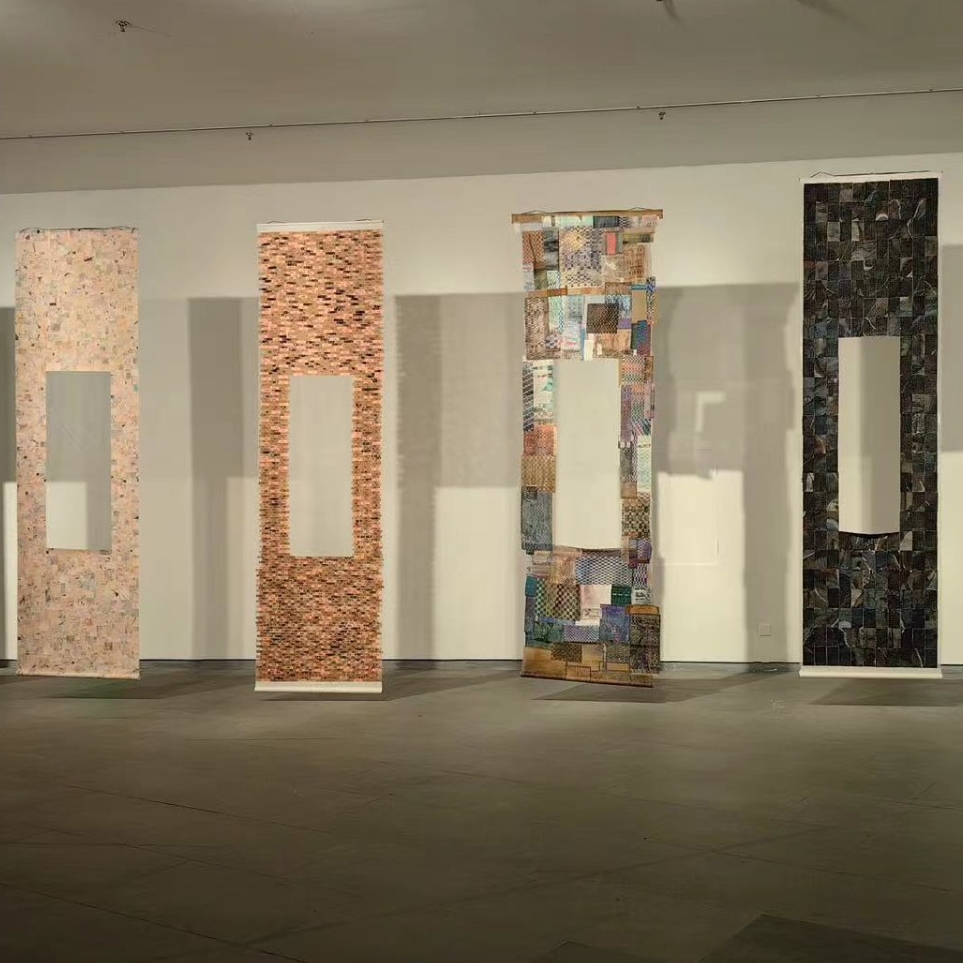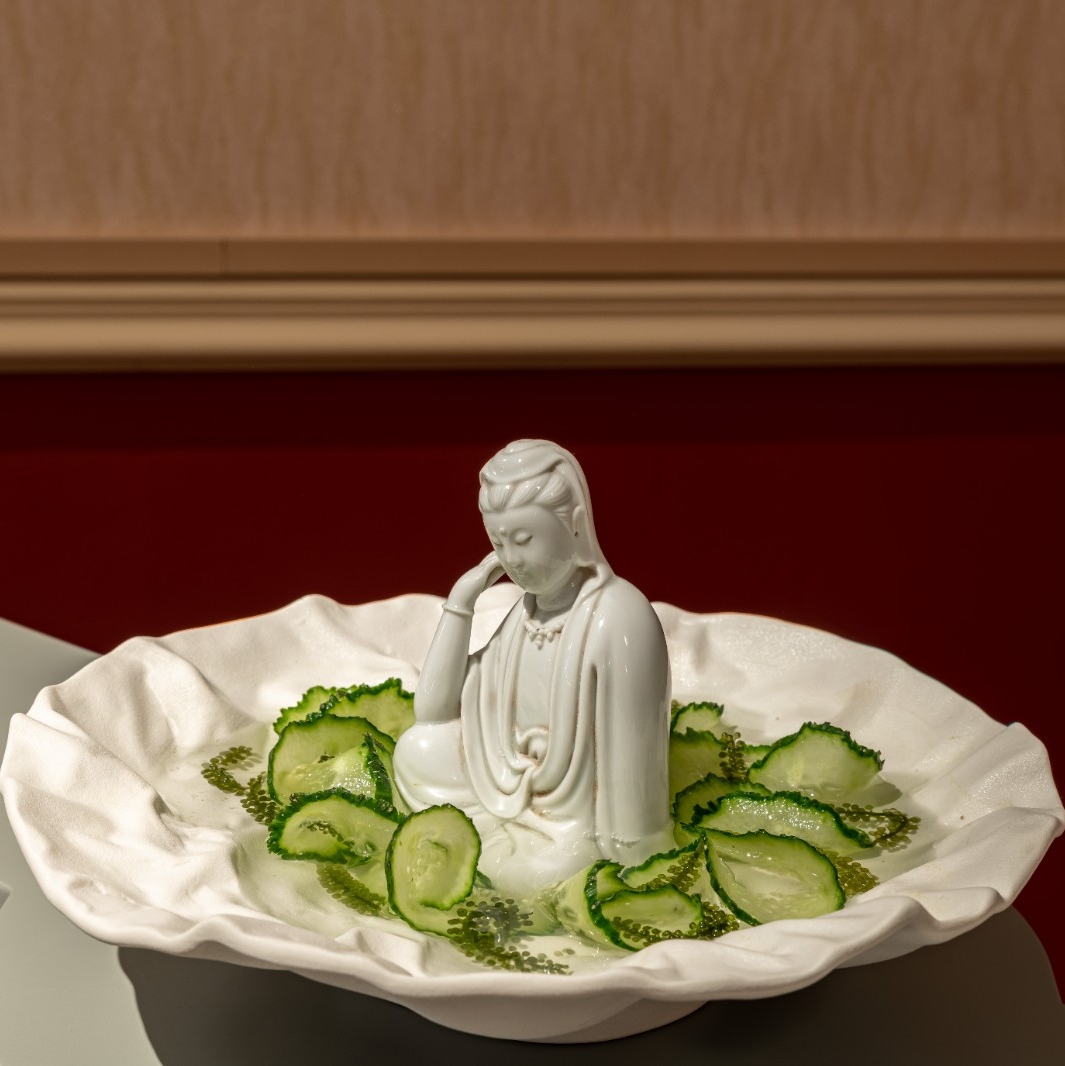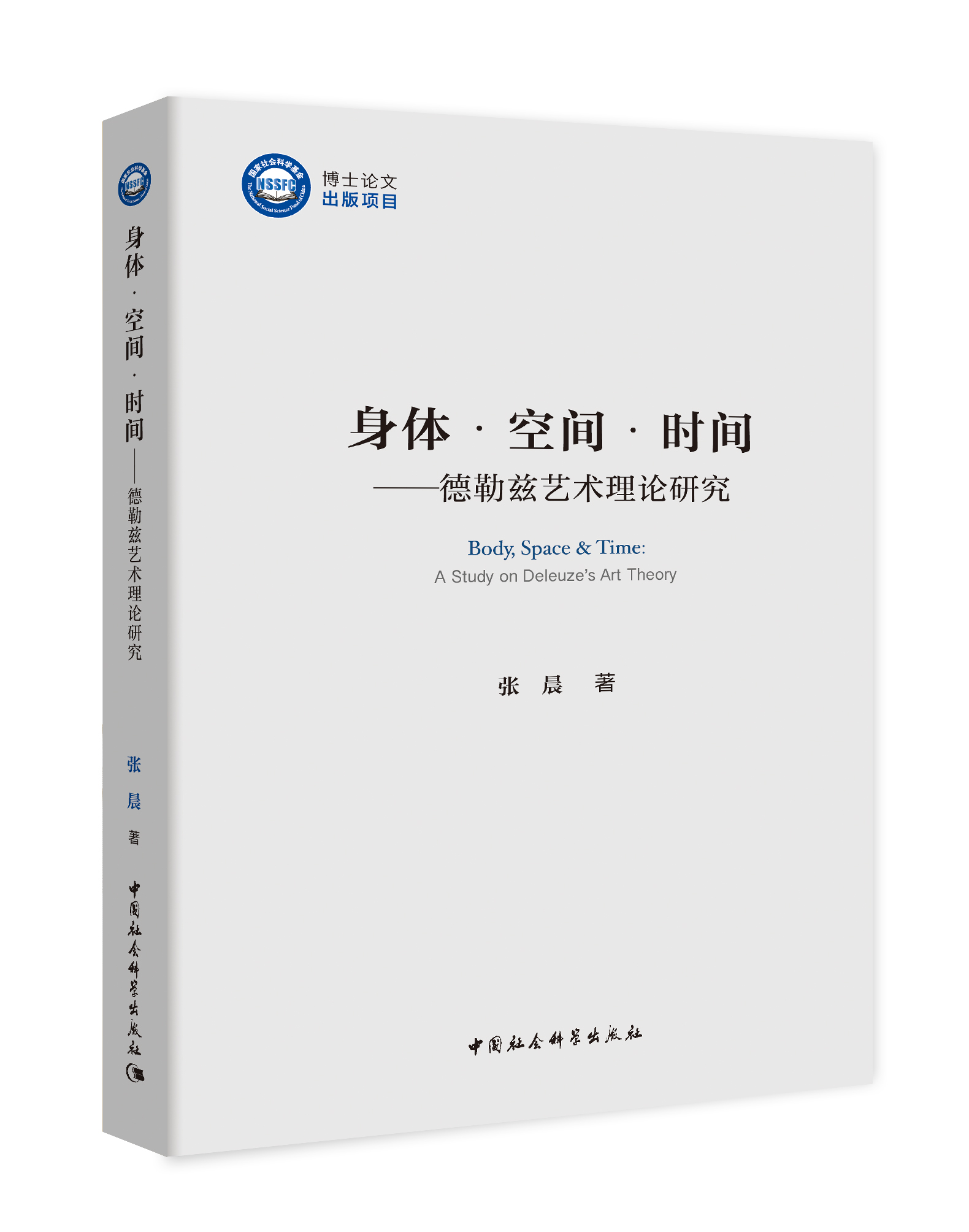
*This is the abstract of newly published doctoral thesis by Zhang Chen.
Taking the French philosopher Gilles Deleuze (1925-1995) as the research object, this thesis is mainly about Deleuze's art theory, as well as the theories of Friedrich Nietzsche and Michel Foucault, which are closely related to Deleuze's thoughts. This includes the study of source, practical significance and future enlightenment of Deleuze's art theory, the thesis then extends to the thinking of art history, the construction of art theory, and the case analysis of specific works, such as painting, performance, video art, etc. The author focuses on the important concept of "body" in Deleuze's art theory, and tries to discuss the meaning of "body" and its relationship with "space" and "time" with the help of relevant text research and examples of art works.
In the first part of the thesis, the author studied Deleuze’s book on painting: Francis Bacon: the Logic of Sensation. With cautious study, the author extracts Deleuze's theoretical interpretation of Bacon’s art and finds that Bacon’s painting is not a Modernism style which has the trend of going from figurative to abstractive, neither like other Schools of Abstract Art, thus he built "the third path” of painting.
Generally speaking, on the one hand, Bacon's painting, with its unique creative techniques, stripped of the function of representation has been distanced from the traditional figurative painting. At the same time, in the powerful creating process, the painting emphasizes and highlights the image of the body, which is also quite different from abstract art. On the other hand, Deleuze points out that the character Bacon created is the "Body without Organs", which breaks the limitation of organic organizations, and made the organs become connected and integrated with each other. However, in Bacon’s times, paintings of geometric abstraction and abstract expressionism separated the functions of organ into optic and haptic fields. Therefore, Bacon's art works are unique, no matter if in the art history or compared with other schools of the same era, for he provides another possibility for painting.
Based on the comprehension of the Logic of Sensation, the author raised another question. Why Bacon's painting is different from the traditional figurative paintings, and why he refuses so firmly to offer representation in his art works? Here, "Representation" is not only a term of painting or art, but also a concept of philosophy: because "Representation" refers to hierarchy and a stable order, which comes from a kind of western general philosophy from Plato to modern philosophers, that is what Jacques Derrida's "Logocentrism" refers to. In the view of Deleuze and the "Post structuralism" or "Post-modern philosophers", "Logocentrism" is the first thing needed to be broken, for it is not only the fetter of thought, but also the fetter of art. In Deleuze's theory, any kind of art, including painting, literature and video, should get rid of the restriction of the overall imagination and representation, and return to its own materiality, diversity and sense of power, so as to constitute the creative process of "difference and repetition". All other issues can be discussed under this premise.
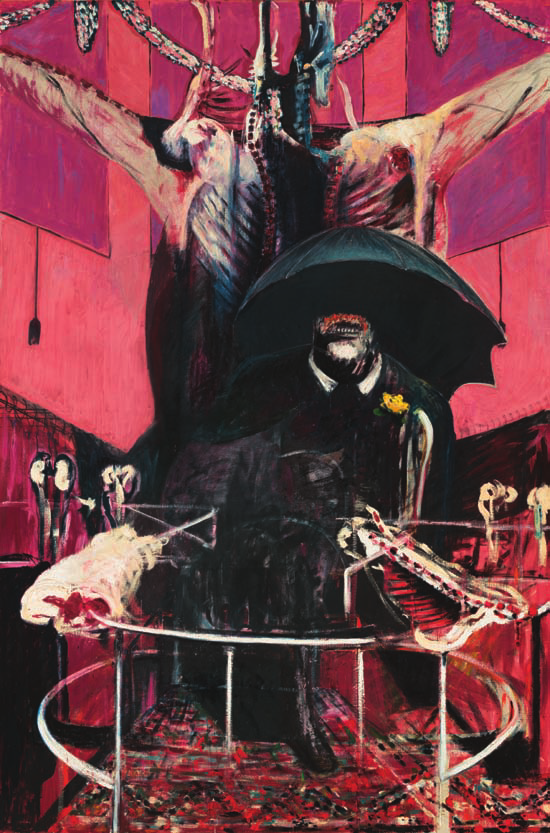
Francis Bacon, Painting,1946, MoMA
Then, according to Deleuze's point, what Bacon's painting brings to the audience is the direct and strong impact on the sensation. In Bacon's painting, the power of sensibility and the potential of the body break away from the shackles of reappearance. What is hidden behind this is a history of intertwined relationship between rationality and sensibility. With the application of the "Dionysian Spirit" and the "The Will to Power", Nietzsche attacked the traditional metaphysics which were proposed by Plato. By summarizing the genealogy in his book Madness and Civilization, Foucault offered a reflection on modern civilization since the Enlightenment, revealing the conspiracy and operation of power behind the reality that people are accustomed to. What Nietzsche and Foucault are both against are the limits of the overall philosophy which focuses on the representation of the order, and also the man-made rational subject which is to be imagined without any foundation. In their theories, it is significant for Nietzsche and his followers to liberate the fresh and emotional body strength from the heavy constraints of the reappearance of order, rational subject matter and overall imagination.
The philosophical thoughts of Deleuze and Foucault also benefit from Nietzsche. While Foucault was obsessed with power analysis and dissecting "Disciplined bodies" in the historical pedigree, Deleuze followed Nietzsche's concept of "The Will to Power" to a greater extent, and followed his vision of restoring the world to one that consists of diverse, shifting and immovable power. Moreover, Deleuze transformed Nietzsche's concept of "Power" and "The Will to Power" into the power of the body, which can be summarized as the "desire" surging inside the body. And then, Deleuze’s desire machine, which is constantly running and connected in the field of production, has been put into practice, as well as into the field of ideological writing and politics, hoping to crash the power restriction of the capitalist system for society, thought, families and individual Territorialization. All of these results in Deleuze's two most representative books and his highest achievement of "capitalism and schizophrenia": Anti-Edipus and A Thousand Plateaus (co-written with Felix Guatari).
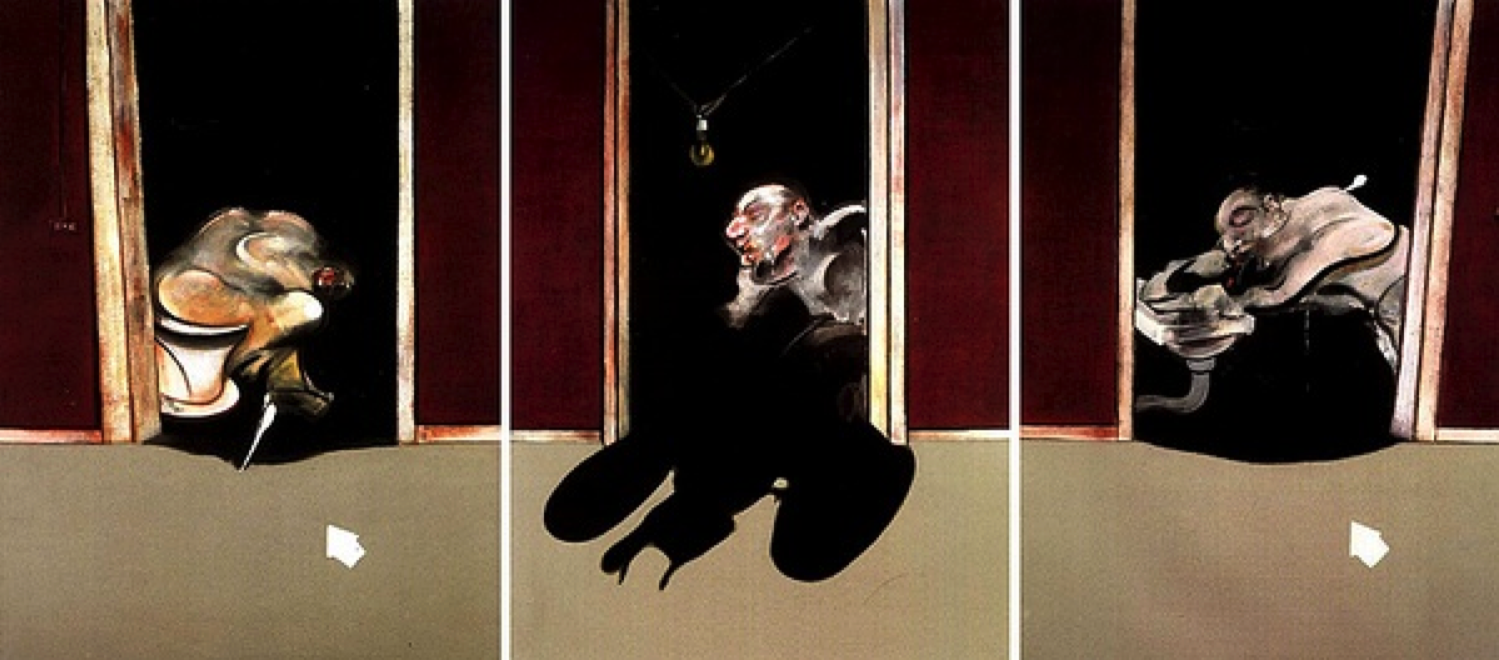
Francis Bacon, Triptych, May-June, 1973, Private Collection
The second part of the thesis focuses on Deleuze's concept of "body", which also involves the conflict between body and subject in the history of western philosophy over a long time. Before the era of Deleuze, Nietzsche ’s “takes the body as the criterion” that has dominated for a century, and Foucault completed the analysis of how the body was disciplined by power, knowledge, morality and other factors over a long history, and became the subject which had lost its fresh power. On this basis, Deleuze emphasises the significance of body. As academic partners and friends, Deleuze and Foucault have a lot of resonance and echo in their thoughts. What's more, both of them are believers of Nietzsche in different degrees. Their thoughts and opinions were haunted by Nietzsche's ghost everywhere. From Nietzsche to Deleuze, they think the world is made up of power, while the body is the embodiment and carrier of power, and "each relationship of power can form a body ", which is expressed in the body's original life and strong desire. In the history of philosophy, the trend of thought called "the body turn" is not only essential to understanding Deleuze's art theory, but also a platform for frequent confrontations of contemporary theories and the theme of art works.
Under the theoretical background of "the body turn" initiated by Nietzsche, when Foucault's "disciplined body" awakened the dream of enlightenment, western artists in 1960s and 1970s first practiced the theories in the field of performance art. In fact, in the history of Western art, "body" has never been absent. No matter the nudity of men and women in ancient Greek and Roman art, or the paintings of Giotto and Tintoretto, all depict the movement of the body, showing a certain process of body and power of territorialization and deterritorialization; on the stage of modern art, Jackson Pollock's action painting and Yves Klein's blue nudity also connects the body with art works, and directly points to the contemporary art and performance art since then. With the renewal and reproduction of body theory since Nietzsche and the great influence of Foucault's power analysis, artists have been thinking and shuttling between body and creation, which goes hand in hand with theories.
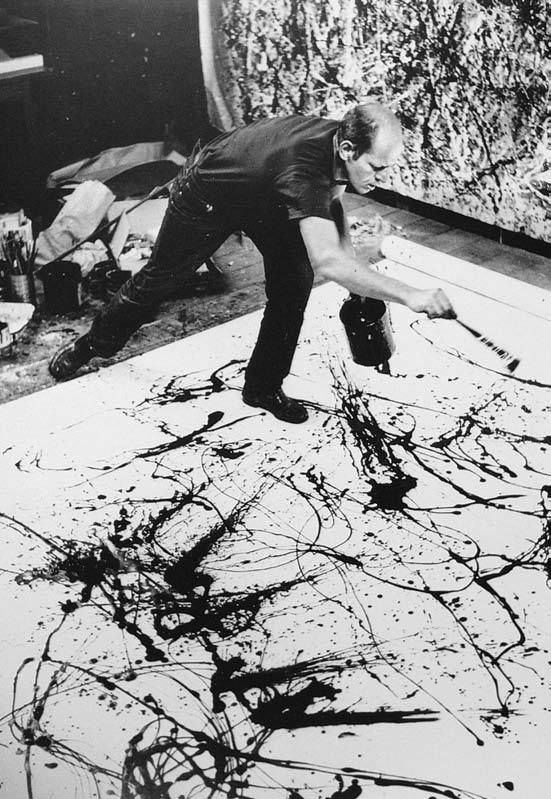
Jackson Pollock
Constantly displaying itself in specific works, ”Body" has passed a turning point in Western art and theory, and also appeared in Chinese contemporary art, such as the works of Sui Jianguo and Zhang Huan. As for whether Chinese traditional art theory is related to body is also one of the concerns of this paper. In this regard, many Chinese and foreign scholars have carried out a lot of research, such as Zong Baihua, Feng Judy, Richard Schusterman, etc. This thesis makes a comparison on the studies of body theory and art between China and the west, and raises many questions. Are there any connections between Nietzsche's "The Will to Power" and Deleuze's "Desire", as well as the "Tao" of ancient Chinese philosophy and the " rhythmic vitality" of ancient Chinese painting theory? What is “body” in meaning in Chinese traditional thoughts of “Xiu Shen" and “Fan Shen Er Cheng"? Are the Chinese artists' yearning for “Xie Yi Pang Bo" and “Wo You" who preset their body position? This thesis will offer thoughts and evaluate these questions.
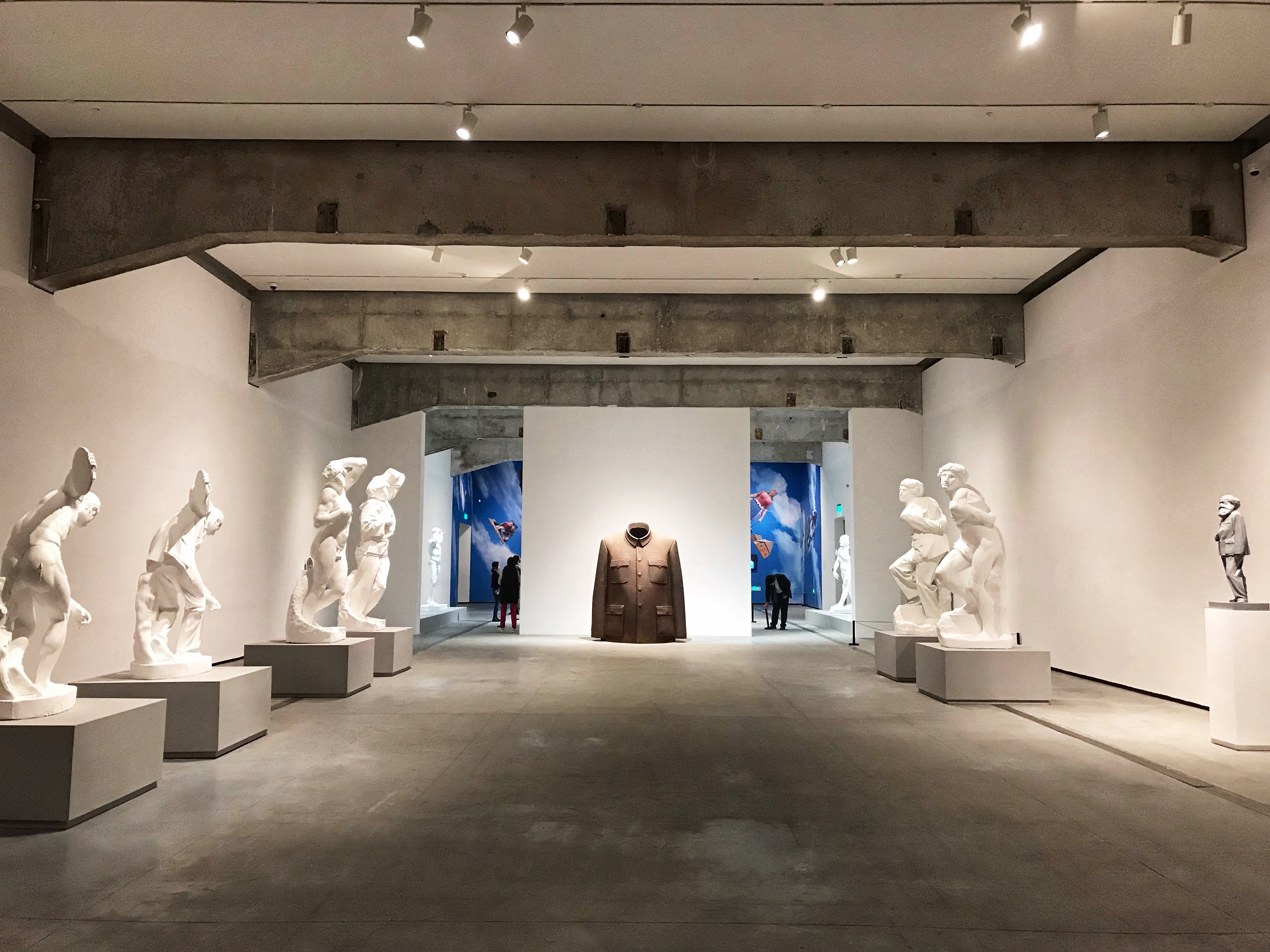
Sui Jianguo, Legacy Mantle, Cloth Vien Study, 1997-1998, Beijing Minsheng Art Museum
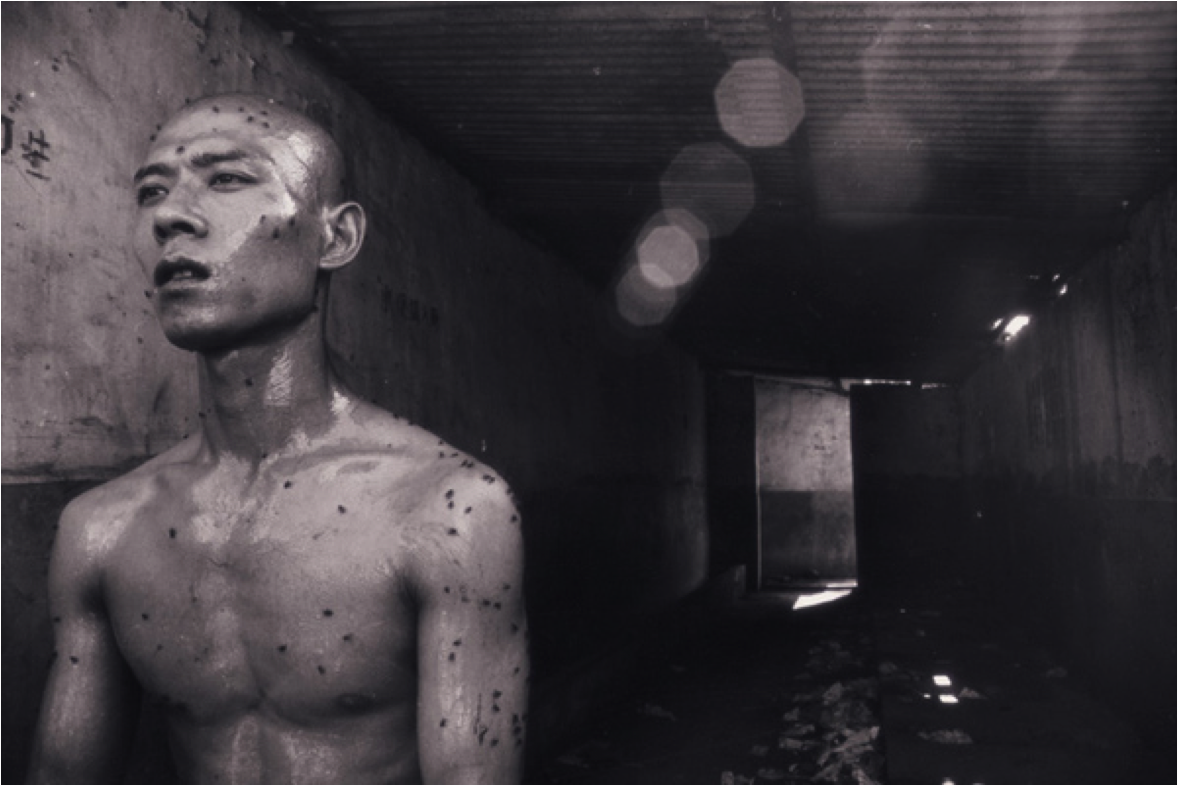
Zhang Huan, 12 ㎡, 1994, Photo by Rong Rong
In the second half of the thesis, after laying out the body theory of “Nietzsche-Foucault-Deleuze”, the author tries to analyze the complex relationship between the body consisting of power, and the concepts of space and time, which is also a topic discussed by Deleuze and art theorists over a long time. Known as "the most important space philosopher of the 20th century", Deleuze rethought space in Baroque art with the concept of “fold”, and he created the concept of "Nomad Space". It seems that Deleuze's philosophy of space, as well as the situation, function and meaning of space in his theory, still comes from the concept of body. Deleuze's consistent emphasis on the senses of body and human perception is related to the artistic practice of emphasizing the interaction between works and audience since the 1990s. This article attempts to point out that this series of theories around body power highlights the description of the free flow of desire between bodies, and the blueprint from Foucault’s power confinement space to Deleuze’s nomadic world is not only for the art works, but also for the audience appreciating the work: first of all, the artist has dismissed the representation or Rational constraints, and committed to the direct expression of desires and feelings from the body; thus, the audience's interpretation of the work, without the help of logical thinking or acquired knowledge, can be homogenous with the work only relying on the perception of the body. That is to say, the audience and the work coexist in a "body without organs", to achieve mutual connection and integration, so that the becoming movement can continue, and new things, thoughts and concepts are constantly created in it. From the perspective of Deleuze's theory, the theme of body and space is not only reflected in the content of art works, but also in the whole process of art creation, exhibition, appreciation and communication, in which the space is opened up and the boundary is broken.
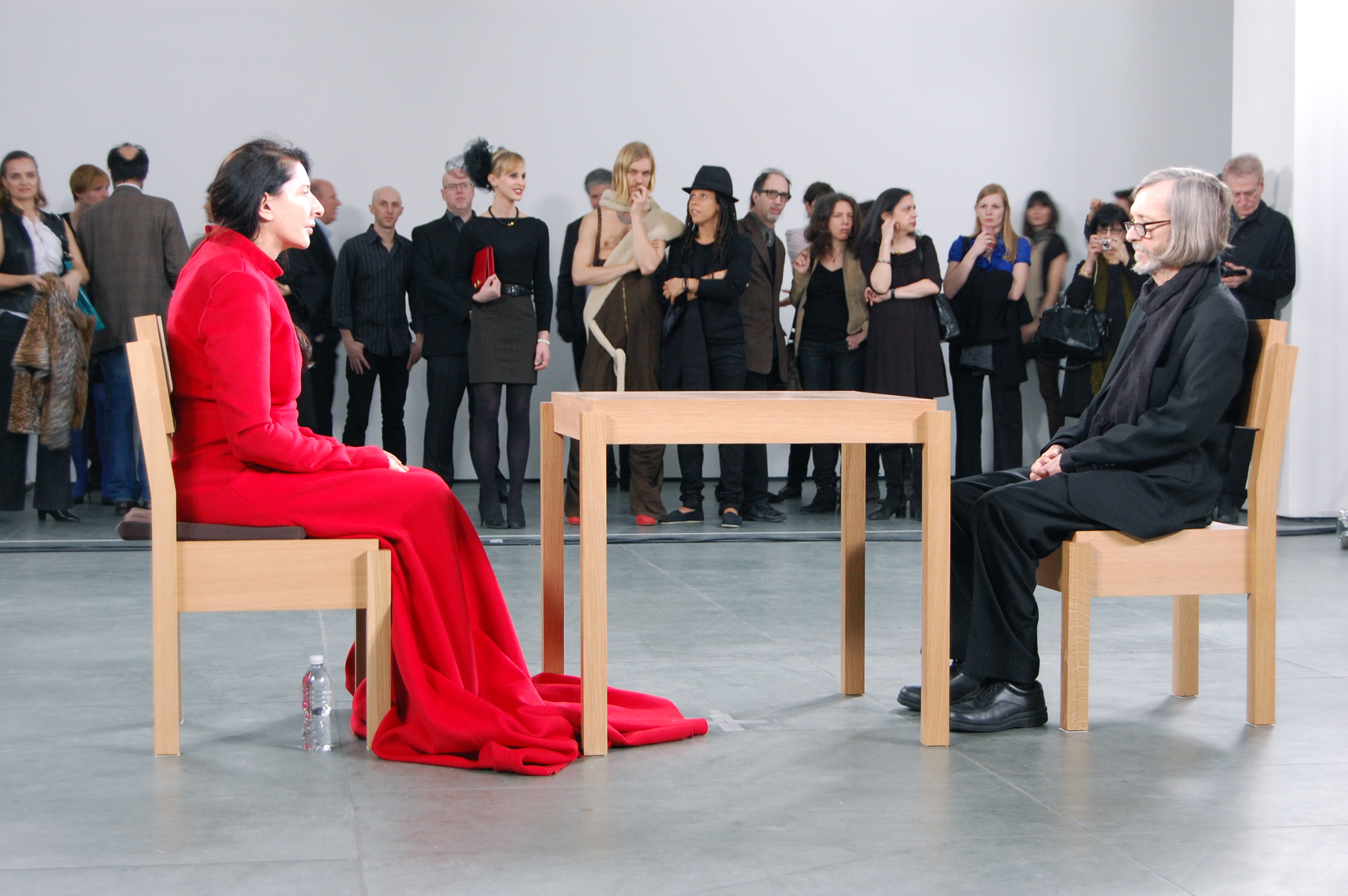
Marina Abramović, The Artist Is Present, 2012, MoMA
Thus it can be seen that this theory provides nourishment for art works and an audience’s comprehension. For example, French art theorist Nicolas Bourriaud, the founder of "Relational Aesthetics", also mentioned the connection between his aesthetic view and Gattari in his books, and discussed the concept of "producing" and "connecting" that he shares with Gattari. In the contemporary art world since the 1990s, New Media Art was flourishing. Artists raised the questions of the interaction between the internal and external space and the relation of works and the body, as well as the interaction between the author and the audience and other issues. It is the "Relational Aesthetics" that makes the contribution to this new art category. At the same time, it also gives us the opportunity to look back on Deleuze's (and Gattari's) concepts of body and space.
Finally, there are two books about films in Deleuze's special works on art theory: Cinema 1: The Movement-Image and Cinema II: The Time-Image. In these two works, Deleuze has devoted himself to the study of the essential characteristics of video art and its deep connection with the philosophical concept of "time": first of all, it needs to be pointed out that "image" and "painting" are interlinked in Deleuze's theory, they are both in a non reproducible and anti narrative systems, and they are also full of the sense of movement and power. Therefore, from Tintoretto to Bacon's painting, we can also use Deleuze's concept of "image" for analysis. In Deleuze's view, the "Movement-Image" in the film, with the moving lens language, enables the audience to see the passage of time. However, the movement of images is often complex, even disordered, such as camera displacement, and montage editing, etc., which breaks people's understanding of linear time and progressive history; furthermore, represented by the French "Nouvelle Vague movies", many modern films adopt the "irrational editing" technique, which gradually deviates from and smashes the traditional narrative logic, the content of the movie - like bacon's painting - is isolated from the image itself, and more directly presents the flow of time and the feeling of its effect on the body. Thus, Deleuze's concept of “Time-Image” was created.
In Deleuze's two volume Cinema, in the transition from "Movement-Image" to "Time-Image", as well as in Tintoretto's and Bacon's paintings, we can see a clear view of Deleuze’s idea about time and history, and the clue from Bergson's "Duration" to Nietzsche's "The Eternal Return”. As far as art is concerned, Deleuze's film theory, on the one hand, aims to eliminate the concept of narrative "image", and in referring to the video art works that share the same creation purpose and technique with it, it can provide reference for the theoretical construction and interpretation of video art; and meanwhile, Deleuze’s understanding of Nietzsche's time pattern of "The Eternal Return" and his understanding of the growth of the "Rhizome" produced by difference and repetition can provide reference for the theoretical construction and interpretation of the video art. It also offers us great inspiration to think about Art History and the relationship between contemporary art and its traditions. Such a heterogeneous and different view of time is also reflected everywhere as the theme in contemporary art.
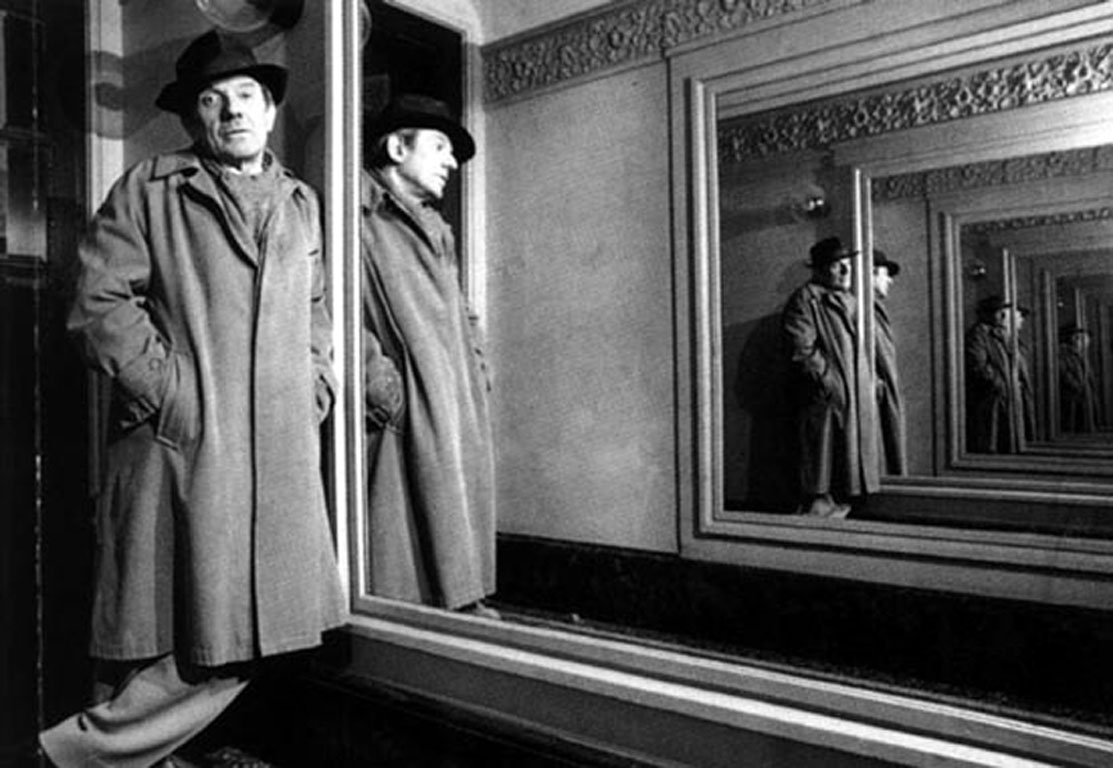
Gilles Deleuze
In Nietzsche and Deleuze’s theory, the world is always in movement, and time is continuously in the process of becoming. This naturally contradicts together with a historical view of "progress" and "end", such as Clement Greenberg's "Modernism Art" system, and Arthur C. Danto's "End of Art Theory" and so on. In the era of Deleuze, under the interference of eternal reincarnation, under the impact of the theory of contingency and fracture, the stable and linear concept of time and the grand and progressive historical narration finally changed. Instead, it was a world full of creativity and possibility.
When it comes to art history, Deleuze's historical view of The Eternal Return has the metaphor of "Rhizome". This kind of free growth, which breaks away from the traditional tree and root pattern in the west, not only symbolizes the free passage of art creation between the traditional and the present, but also refers to the current Internet era and the background of globalization. Therefore, it is no wonder that Foucault said that Deleuze's era has not yet arrived, but the day we live, might become "the century of Deleuze".
In conclusion, Deleuze not only discusses the important topic of philosophy theory and art creation: the concept of “body" in his art theory, but also connects the ideological clues including Nietzsche and Foucault. Together, they build the relationship network of “body-space-time” with the philosophical discourse of "power", "desire" and "becoming" for art history and contemporary art. At the same time, it can provide valuable reference for Chinese art in the comparison of Chinese and western theories and works. Of course, it can also bring profound practical significance for us who are in the flow of digital, consumer culture and this virtual era.
Courtesy of the Author.



